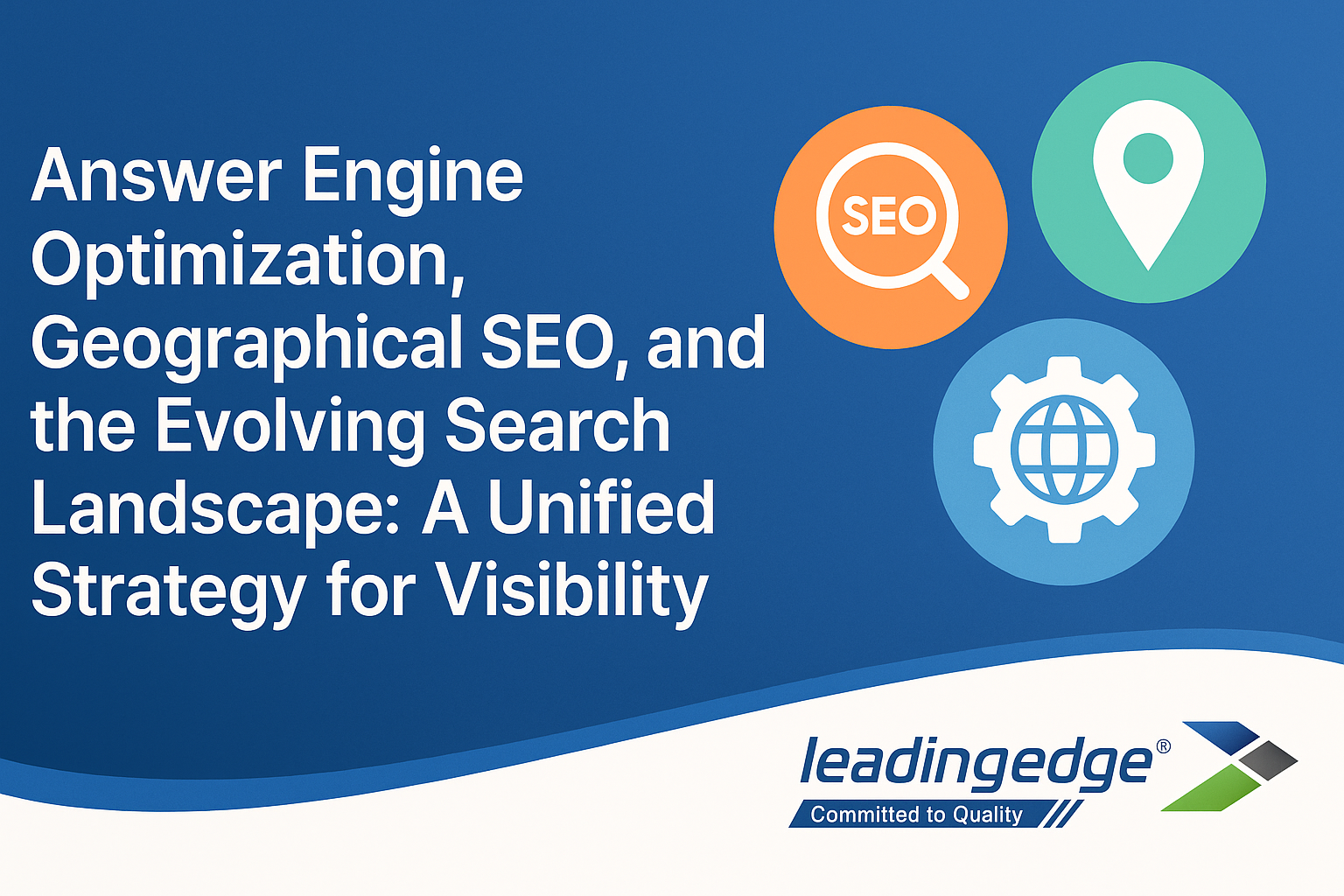AEO, GEO & SEO Strategy Guide for 2025 | Full Optimization Plan
Answer Engine Optimization, Geographical SEO, and the Evolving Search Landscape: A Unified Strategy for Visibility
The Rise of Answer-First Search Behavior
The way people search online has changed. Today, users expect quick, clear answers to their questions. With AI tools and rich snippets becoming more common, fewer people are clicking on traditional website links. Instead, they rely on featured snippets, knowledge panels, and voice responses to get what they need instantly. This shift is what’s driving the importance of Answer Engine Optimization (AEO). Unlike traditional SEO, AEO focuses on how your content can become the answer itself—right there in the search results.
Core Definitions – SEO vs AEO vs GEO
SEO (Search Engine Optimization) helps your content rank higher in search engine results by using keywords, backlinks, and on-page improvements. AEO (Answer Engine Optimization) is about structuring your content to directly answer questions using formats that Google and voice assistants can read aloud. GEO (Geographical SEO) ensures your content appears when people search with local intent. Each plays a different role—but all three are now essential to reach modern searchers.
Why AEO Matters Now
Google’s Search Generative Experience (SGE), Bing AI, and voice assistants are transforming how answers are delivered. With over 50% of searches ending without a click (zero-click searches), being “the answer” is the new SEO. AEO is crucial for businesses wanting to appear in voice searches, featured snippets, and knowledge cards—making your content more useful to real users and more accessible to AI engines.
Structuring Content for AEO Success
Winning in AEO means writing clearly and using structure. Use H2s for questions, keep answers short (40–60 words), and apply schema markup like FAQPage and HowTo. Google needs your content to be clean, scannable, and easy to lift into an answer box. Don’t just write paragraphs—structure your content for answers.
Optimizing for Voice Search and Conversational AI
People speak differently than they type. Voice queries are longer, more conversational, and often phrased as questions. Use natural language, contractions, and trigger phrases like “how do I” or “what is.” Also, consider multi-step content that flows like a conversation. AI assistants pull from content that sounds human, so write like you talk.
Implementing AEO and GEO at the Local Level
Local businesses can win big by blending AEO and GEO. Start by optimizing your Google Business Profile with updated NAP (name, address, phone), FAQs, and service details. Add location-specific schema markup and write localized content—like “best pizza in Mohali” or “plumber near Chandigarh.” Also, answer questions your local customers actually ask.
Tools and Platforms to Execute AEO Successfully
Several tools help you implement AEO effectively:- Semrush & Ahrefs: For keyword and snippet tracking- AlsoAsked & AnswerThePublic: For finding real user queries- Google Search Console: To track impressions and snippet wins- InLinks & MarketMuse: For entity SEO- Schema Markup Validator: To validate structured data- Voice search test tools: Like Jetson.ai or Google Assistant
Measuring AEO Success Through Strategic KPIs
Don’t just measure traffic. Look at:- Snippet impressions and People Also Ask appearances- Voice search results and assistant readouts- Engagement from snippet clicks (time on page, bounce)- Featured snippet CTR- Local call or direction requests from map results- Branded search volume growth
The Future of AEO – Welcome to GEO 2.0 (Generative Engine Optimization)
With the rise of LLMs (Large Language Models), search is now answer generation. GEO 2.0 is about optimizing your content so AI can summarize and cite it. You’ll need semantic-rich content, clear author attribution, structured data, and contextual depth. Your content shouldn’t just rank—it should *be* the source.
The AEO-GEO-SEO Integration Playbook
A unified strategy includes:1. Start with an SEO audit.2. Add structured data (FAQ, Article, Local Business).3. Map user intent to content format.4. Build local pages with GEO in mind.5. Add answer-first content and schema.6. Monitor SGE and Bing Chat inclusion.7. Track KPIs across SEO, AEO, GEO.
Conclusion
SEO is evolving. AEO makes you the answer. GEO prepares you for the AI-first future. When all three work together, your brand doesn’t just get found—it becomes trusted, remembered, and recommended by AI.
Make your business findable. Make it answerable. Make it future-ready. Read More

